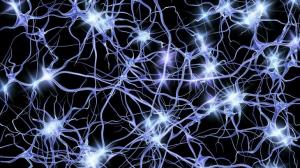What happens in the brain when someone has seizures?
The seizures they are one of the most characteristic and recognizable symptoms in a wide variety of cases. The tremors that run throughout the body, as well as the altered states of consciousness (or even the loss of it) are the classic characteristics of the seizure, and the fact that these affect the whole body and psychological processes suggests that behind this symptom is an abnormal functioning of the system highly strung.
Specifically, seizures are due in part to changes in the firing patterns of neurons located in the brain.
At the origin of seizures
Seizures can be due to several causes, among which are high fever, degenerative diseases of the brain, or functional failures that cause epileptic seizures. However, beyond the concrete cause, seizures are caused by a characteristic pattern of neural activity. This neural activity is recognizable by the rhythms with which various neurons send electrical signals to other networks of nerve cells. Seizures occur because in the brain there are neurons acting abnormally, which produces alterations in consciousness and the tension and relaxation of muscle groups.
What is this pattern of activity?
Basically, it's about many neurons firing electrical signals at the same time. In a normal conscious situation, encephalogram readings show a pattern of activity with few ups and downs, because there are no large groups of neurons coordinated with each other to transmit information to the time. However, during seizures, the encephalogram reveals large peaks of electrical activity that contrast with moments of low activity.
All this happens in a very short time, and is reflected in the typical tremors of a person with seizures. Just as tremors are actually the repeated tension and relaxation of muscles, something similar happens in the brain: neurons coordinate to send shocks together, but they also do it at times when they do not send signals electrical. Hence, in the encephalogram readings, peaks of activity appear: at a certain moment, the effect of many nerve cells activating at the same time is not so compensated by the non-activation of other neurons, with which the general electrical activation moves away from the half.
But seizures are not characterized only by having many neurons coordinated with each other. Also, each of these neurons is firing signals with a higher frequency than usual. In other words, the nerve cells are in a clear state of excitement for the duration of the crisis.
At the same time, these neurons synchronized with each other responsible for abnormal functioning are making more and more neurons begin to obey them and to fire at the same time, with which the effects of the seizure are magnified and each time. As the seconds pass there will be more and more neurons in a state of constant excitation and coordinated with each other, but fortunately seizures do not usually last indefinitely.
And, while we sleep ...
As a curiosity, It seems that something similar happens in the moments ofdreamin which we are not aware of anythingWhereas when we dream, the results shown by encephalograms are very similar to those of an awake person.
However, these cases have already been predicted by evolution and mechanisms have been established so that we are not forced to have seizures while we sleep.

